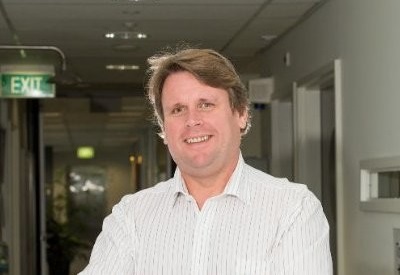Preventing resistance to targeted therapies
Fast facts
- Official title: Preventing resistance to targeted therapies using ion channel drugs
- Lead researcher: Professor Terrance Johns
- Where: Telethon Kids Institute Cancer Centre, Perth, Australia
- When: June 2018 – May 2020
- Cost: £116,285
- Research type: Paediatric and Adult, High Grade, Academic
- Award type: Expanding theories
What is it?
Some cells in the brain are described as being ‘plastic’ because they have the ability to change their identity in response to changes in their environment. High grade gliomas (HGGs) grow from glial cells, a type of cell in the brain that supports and protects nerve cells. Glial cells may play an important role in brain plasticity, which is how the brain adapts, learns and stores information.
While brain plasticity is important for the normal functioning of the brain, it could also be part of the reason why treatments fail in patients with HGGs. Researchers think that HGG cells undergo plastic changes in response to treatment that enables them to survive. Understanding how these plastic changes occur is important in order to prevent them from happening.
Ion channels are small holes in the cell membrane that control the flow of small substances in and out of the cell, and are believed to play a role in cell plasticity. In this project, Professor Terrance Johns’ research team will be analysing ion channels in a large number of tumour samples from patients with HGGs in order to identify which ion channels are involved in cell plasticity. The team will then test whether blocking those specific ion channels with drugs can prevent plastic changes within the tumour and improve the effectiveness of treatments.
Why is it important?
People affected by other types of cancers have experienced an increase in survival and improvement in their quality of life after receiving ’targeted treatments’. Targeted therapy is when a drug changes a specific aspect involved in the growth and spread of cancer.
In comparison, people with HGGs have a poorer prognosis despite aggressive treatment with surgery, radiotherapy and chemotherapy. A number of targeted therapies have been tested , but they’ve failed to improve outcomes, highlighting the urgent need to better understand the biology of these tumours and why treatments fail.
Who will it help?
This research will help identify new drug combinations that are more effective and may improve survival for people with HGGs.
Milestones
Of the 300 ion channels that are known to be in humans the team was able to show that only a small number are found in high grade gliomas.
Their initial findings were through analysis of a large data library. Next, they took this theory to the lab and confirmed that the channels were in tumour samples collected from consenting participants.
Additionally, the team showed that the same ion channels were present, and functional, in the cells they were growing in the lab from patients’ tumours. This shows that the cells in the lab are good representations of cells in people’s tumours, and that they’re accurate models to use in their investigations.
Once they’d verified the models were accurate, the team progressed to testing drugs to plug the channels and attempt to stop the growth of the tumour cells. Work moving this towards a clinical trial is underway and an ion channel combination therapy is showing promise as a future treatment for HGG.
Professor Johns’ team made great progress during the two-year term of their grant. They’ve made insightful discoveries into the ways that high grade glial tumours could be growing and have advanced this into work looking at stopping that growth. They’ve already secured further funding that they hope will propel their discoveries into clinical trials, and into meaningful treatment benefits for people with gliomas.
Research is just one other way your regular gift can make a difference
Research is the only way we will discover kinder, more effective treatments and, ultimately, stamp out brain tumours – for good! However, brain tumours are complex and research in to them takes a great deal of time and money.
Across the UK, over 100,000 families are facing the overwhelming diagnosis of a brain tumour and it is only through the generosity of people like you can we continue to help them.
But, by setting up a regular gift – as little as £2 per month – you can ensure that families no longer face this destructive disease.
In this section
Recommended reading

